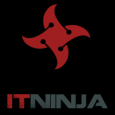Chaining Applications together
Hi, I have hunted for a solution to this as I thought it would be easy however I have not found an answer as yet.
We have a fleet of say 500 machines that are different to the rest of our standard SOE build.
These 500 PC's require another 5 apps or so to be installed.
How do I chain the apps together so that it can be deployed to these machines.
Also this group of machines are random. They do not share any common denominater except they they are laptops. We also have the same laptop models for other people outside of thse 500.
Scripting the apps together I can easily do via batch or vbs scripts etc but how do I then deploy to random PC numbers or even one of them. ie say I build a new PC. I then want to deploy all of these 5 applications at once without having to do them one by one.
Can this be done in KACE?
Hope this makes sense?
Cheers
Answers (6)
Kace can handle your situation rather easily, it's just the initial setup that will be slightly tedious.
In your case, you would have to manually place the 500 devices into a "standard label" (as opposed to having them automaticly populate a "smart label" based on criteria). Once the machines are in the label, it's trivial to build Managed install packages and have them rolled out to any machine in a particular label. All you do is select the label from a dropdown list inside of the install
Ex:

One way I cheated with the manual label is by doing the following. I was needing to have about 700 machines in a manual label. I lucked out by having a list of machines in csv.
I took my csv and ran this formula on the cells where the machine names were listed ="'"&B1&"',". Assuming B1 is the start of your machine names. This will add ' ', to every cell after you click and drag down your list. Then copy and paste that new row into the SQL query below.
I created a dummy smart label. I then modified it to include an IN command in the SQL.
select MACHINE.*, C.CLIENT_CONNECTED, UNIX_TIMESTAMP(now()) - UNIX_TIMESTAMP(LAST_SYNC) as LAST_SYNC_TIME,
UNIX_TIMESTAMP(LAST_SYNC) as LAST_SYNC_SECONDS
from ORG1.MACHINE
LEFT JOIN KBSYS.KUID_ORGANIZATION O ON O.KUID=MACHINE.KUID LEFT JOIN KBSYS.SMMP_CONNECTION C ON C.KUID = MACHINE.KUID AND O.ORGANIZATION_ID = 1
where ( MACHINE.NAME IN ('COMPUTER1',
'COMPUTER2',
'COMPUTER3'))
This will still be considered a smart label so you can still create a manual label afterwards. It does beat checkmarking 500 boxes though.
Also vote here.
http://kace.uservoice.com/forums/82699-k1000/suggestions/1281951-ability-to-give-mi-s-dependencies
Comments:
-
Also make sure there is no , after the last computer name. This will cause it to error out. - dugullett 11 years ago
On a side note, manual labels can be particularly powerful. For each server in my organization I manually attached a smart label. This way if I'm taking patches out of my test group I can still exclude anything with the server label attached. This is also useful for managing different roles within your organization because a smart label may not be the best way to define the role of a machine. I hope this insight helps.







